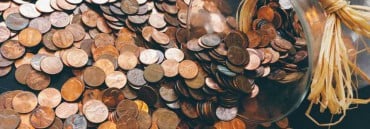DEFINITION of M0, M1, M2, M3, M4
M0, M1, M2, M3, M4 represent different measures of money supply. Not all of them are widely used and the exact classifications depend on the country.
WHAT IT IS IN ESSENCE
M0 and M1, also called narrow money, normally include coins and notes in circulation and other money equivalents that are easily convertible into cash.
M2 includes M1 plus short-term time deposits in banks and 24-hour money market funds.
M3 includes M2 plus longer-term time deposits and money market funds with more than 24-hour maturity.
The exact definitions of the three measures depend on the country.
M4 includes M3 plus other deposits. The term broad money is used to describe M2, M3 or M4, depending on the local practice.
M0 is a material currency (cash itself). All notes, coins, and bearer certificates convertible on demand (which includes, by definition, depositor reserves of banks which must be kept in physical cash).
M1 is the money supply that includes physical currency and coin. Also, demand deposits, traveler’s checks, other checkable deposits and negotiable order of withdrawal accounts. M1 includes cash and checking deposits.
M2 is a measure of the money supply which various central banks are using. In the Federal Reserve System, M2 includes all physical currency and deposits in checking accounts and adds to this the amount of money in savings accounts, certificates of deposit up to $100,000 (or their equivalents), and money market accounts.
The European Central Bank defines M2 as the aggregation currency in circulation, overnight deposits, deposits.
All with maturities of up to two years, and deposits redeemable with notice of up to three months.
The Japanese, Indian, and New Zealand central banks have definitions similar to (but not exactly the same as) the Federal Reserve.
While different central banks have slightly different definitions of M2, all include money currently in circulation and the money most likely to come into circulation. Therefore, it is the most common measure in forecasting inflation.
M3 is a measure of the money supply that includes M2 as well as large time deposits, institutional money market funds, short-term repurchase agreements, and larger liquid assets.
The M3 measurement includes assets that are less liquid than other components of the money supply and are referred to as “near, near money.”
- The M4 money supply is defined as a measure of notes and coins in circulation (M0) + bank accounts. It is a broader definition because it includes bank accounts and not just notes and coins in circulation.
HOW TO USE
Use them all.
See also our FULL trading with success guide for beginners here

